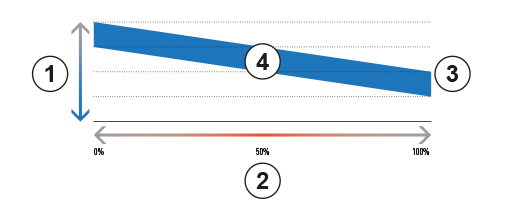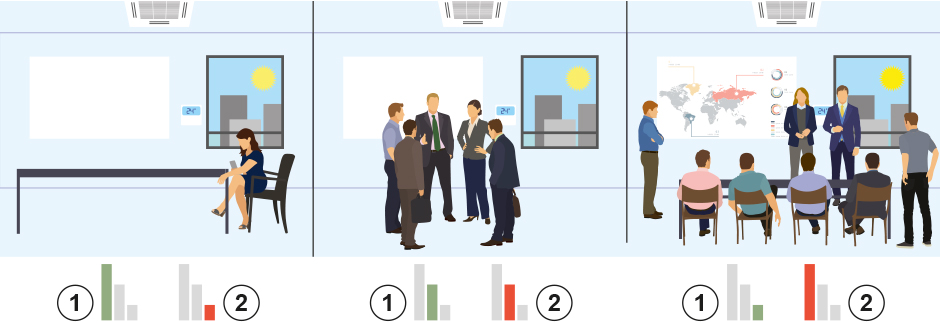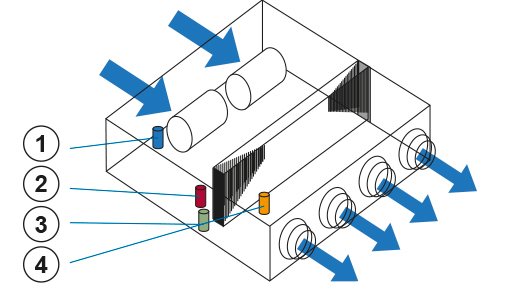Panasonic VRF TOP comfort


Variable Evaporation Temperature (VET)
1. Evaporation temperature
2. Indoor total demand (cooling mode)
3. Evaporation temperature
4. Evaporation temperature range
Cooling mode example (function also for heating is possible)

2. Room load
Air discharge temperature sensor advantages
We have high experience on this advantage.
The Panasonic air discharge temperature sensor was created for security purposes. To avoid condensation in metals ducts, grilles, and in some indoor units close to high humidity areas as restaurants, retail and residential applications close to the sea, lakes and so on. This technology prevents condensation inside ducts, increasing health, because without water in ducts there is no possibility to grow mold, bacteria or other pathogens, avoiding flu, cold, etc..
Air discharge temperature control
Discharge air at below 10°C is uncomfortable and can cause draughts. With Panasonic air discharge temperature control, air off temperature can be controlled between 7°C - 22°C.
- Air intake sensor
- E3 pipe temperature sensor
- E1 pipe temperature sensor
- Air discharge sensor











































